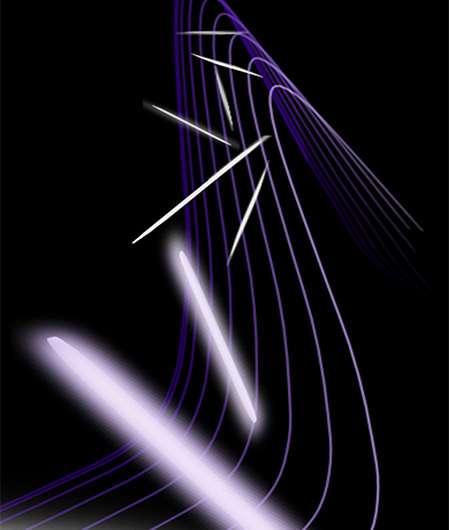Perovskite nanowires have been found to function as shape-correlated stable light emitters. Credit: The Ames Laboratory
Ames Laboratory scientists discovered semiconducting nanocrystals that function not only as stellar light-to-energy converters but also as stable light emitters.
Honing methods to fine-tune optimal characteristics of materials that convert light to energy may lead to more efficient materials, as performance depends critically on composition, crystallinity, and morphology. These perovskites could be used in the construction of new solar cell architectures, as well as for light-emitting devices and single particle imaging and tracking.
Perovskite materials, such as CH3NH3PbX3 (X = I, Br), are known to display intriguing electronic, light-emitting, and chemical properties. Researchers at the Ames Laboratory synthesized a series of perovskite nanocrystals with different morphologies (i.e., dots, rods, wires, plates, and sheets) by using different solvents and capping ligands. The Ames Laboratory team tested the nanocrystals to explore their morphology, growth, properties, and stability under various conditions. Characterization studies of photoluminescence, like that seen with glow-in-the-dark paint, found that the rods and wires showed higher photoluminescence and longer photoluminescence lifetimes compared to other shapes.
Perovskite nanocrystals with bromine were found to be particularly unstable when exposed to an electron beam during transmission electron microscopy analysis, "melting" to form smaller dot-like particles of unknown composition. Further optical studies revealed that the nanocrystals with iodine are shape-correlated stable light emitters at room temperature.
More information: "Shape evolution and single particle luminescence of organometal halide perovskite nanocrystals." ACS Nano, 9, 2948 (2015). DOI: 10.1021/nn507020s
Journal information: ACS Nano
Provided by US Department of Energy
























